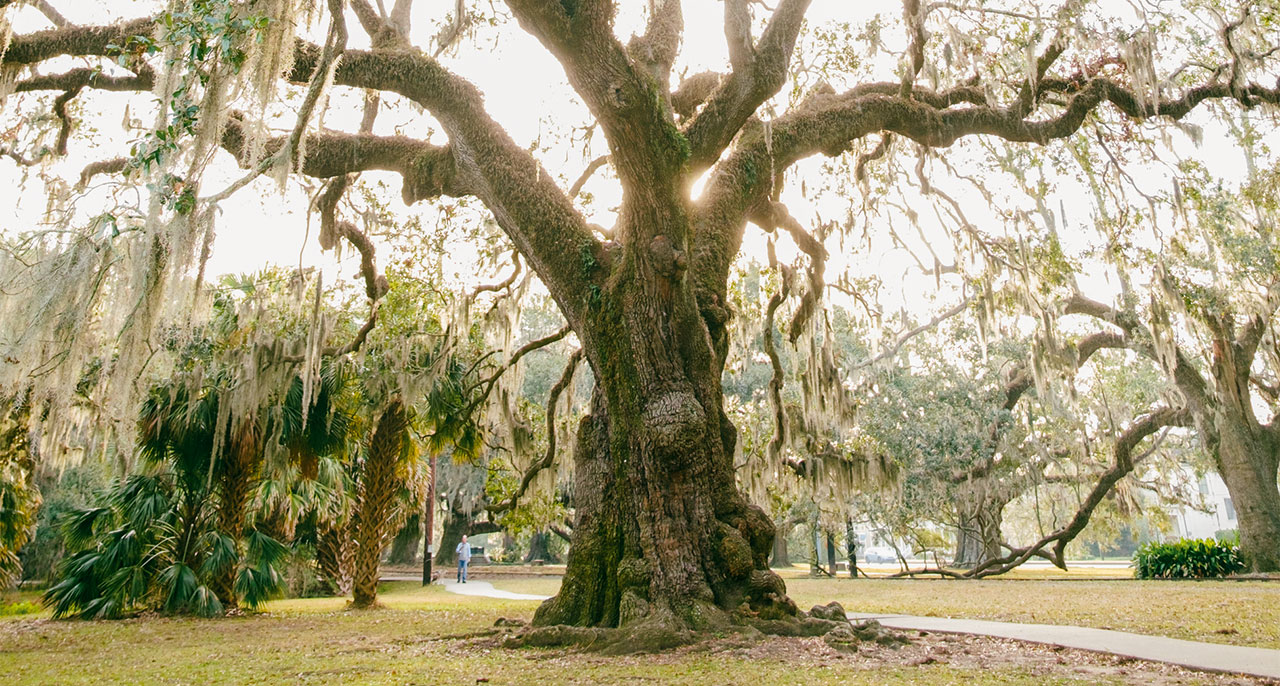On the eve of New York City’s lockdown for the pandemic, I felt the fear of the unknown that was in the air. So I meditated with a crooked tree with branches snaking out sideways, and insights from that tree meditation helped me weather the pandemic over the next year.
The next Saturday, I took my father to the ER for Covid, and I never held him again till I held his ashes. Throughout those days when grief and helplessness enveloped me, I leaned deep into my nature-meditation experiences. I remembered how trees survive storms. I remembered the groundedness of the earth holding me. I remembered the loving nature of the universe. When my family asked how I was holding up, I answered, thinking about trees, “Roots go deeper; feet stand firmer.”
Six months later, in the Hudson Valley, I picked a big tree that had fallen right next to the trail. I spent time sensing the tree and holding it, as if it were my dad’s body lying in the hospital. I sensed love from the tree and my love for it/him. I said my prayers in tears, feeling my dad’s spirit there with me.
What is tree meditation? It is a practice described by Mark Coleman in his book Awake in the Wild, of spending time with a tree with attention and reverence. This is my interpretation of how to do it, integrating others’ perspectives as well.
Be Called to a Tree
Notice where you are standing in your environment, tune in to the body first, and sense if there is a tree that you find interesting to connect with. Follow your curiosity.
As you first approach, take in the whole tree from a distance, noticing its height, shape, and how it fits in with its environment.
Sense the Tree Up Close
Slowly approach the tree and look at the tree from root to canopy. Shunryu Suzuki said, “As soon as you see something, you already start to intellectualize it. As soon as you intellectualize something, it is no longer what you saw.” Try to look at the tree as shape, texture, colors as you were seeing it for the first time.
Feel into the environment of the tree and its whole mini-ecosystem. What does this tree smell like? Can you smell the scents of bark and leaves? What do you hear standing in front of this tree? Birdsong? Leaves rustling? Insects?
Feel any moss or ferns or lichen that may be living on the tree. Be aware that you are visiting the home of animals. Be careful not to instill fear in them. Humans are perceived as predators.
Interact with the Tree
A tree is a living being. Just as you wouldn’t hug a stranger without permission, first introduce yourself to a tree and ask permission before you interact with it. Out loud or silently, state your name and purpose for visiting the tree. Get a felt sense if the tree is okay with you interacting with it. If yes, then go ahead. If not, say thanks, gently turning your attention to another tree.
Check in with your body and sense how you may want to interact with the tree, or how it may want you to be with it. Perhaps you want to ask for support from it. Perhaps you want to ask it a question. Perhaps you simply want to lean against the tree and rest. Listen to your body and let it guide you.
Interacting with a tree is an energetic exchange. You may want to hug the tree. You can sit at the roots, or you can lie down and rest your head on or between the roots and look up at the canopy. Feel if there’s a sense of exchange between you and the tree.
Touch different parts of the tree—roots, bark, leaves. Close your eyes and rub these different parts against your face and hands. Can you feel the roughness of the bark and sense what the tree has gone through to survive? The sense of touch is particularly helpful for connecting with the tree. The moment you touch the tree, does anything shift inside your body? What sensations arise?
Stay a Little Longer
You might be compelled to move on, but stay. See how the full connections develop. Notice the quality of impatience, resistance, or boredom. Feel whatever is arising, take a breath, and resume this meditation.
One helpful quality to bring to this practice is beginner’s mind, a sense of curiosity and openness. If you are a one-year-old child seeing a tree for the first time, what would you see? How would you interact and connect with it? There is no right or wrong experience. Just be with what arises.
At the end of spending time with the tree, express your gratitude by giving it some water or a bow or any kind of gesture (verbal or nonverbal) that allows you to show your thanks for its support.
May a tree bless you and sustain you.

